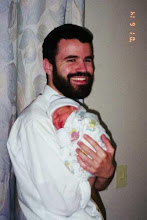Hi,
Note:
For the purpose of this email, a tanna is a sage of the time of the mishnah (roughly 2nd century BCE - 3rd century CE), and an amora is a sage of the time of the gemara (roughly 3rd - 6th century CE).
"I asked this of my honoured mentor and master, Rabbi Chaim haLevi of Brisk, and he replied that in truth, an amora is empowered to disagree with a tanna.
"The fact that the Talmud challenges a statement of an amora because it seems to contradict a statemtent of a tanna is because amoraim simply do not disagree with tannaim, and if the amora had known the statement of the tanna, he would not have disputed it. However, where he disputes [a tanna's statement] explicitly, the law may follow him."
(Rabbi Elchanan Wasserman, Kovetz Shiurim to Bava Batra 633)
Have a great day,
Mordechai
Monday, December 29, 2014
Subscribe to:
Post Comments (Atom)

Although the distinction has little difference. Whether rishonim have more authority on a legal technical level (as is being denied here) or whether acharonim simply assume their understanding is on a different plane, one still ends up giving a rishon's position more halachic weight.
ReplyDeleteI guess the only real difference would be acharonim like the Vilna Gaon, who regularly disagree with rishonim and get away with it because they're deemed "throwbacks". If the authority of rishonim was by formal rule, then one would need a formal loophole for the exceptional acharonim.
However, Rav Chaim's grandson had a different model of relative authority. R' JB Soloveitchik, as reported in shiur by R' Aharon Rakeffet, had a position based on the acceptance of the greater Shulchan Arukh (from the Beis Yoseif to the opinions on the side of the standard SA page) as the centerpiece of halachic study.
The Rambam in his introduction to his code (haqdamah to the Yad, but I don't know who else reads these comments), says that what gives the Talmud its halachic authority is that the Talmud was accepted as such by the entire Jewish community, globally.
The Rav took the same idea and applied it to the greater Shulchan Arukh. While an acharon (laster rabbi) could argue with the Shulchan Arukh, he has to make his case. In fact, we can define an acharon as someone who has to prove his case if he wants to contradict the greater Shulchan Arukh; whereas a rishon is someone he can cite as proof.
(I personally would throw in a caveat about Bal'adi Teimanim, the version of the Yemenite tradition less influenced by communication with the Ottoman Empire, where halachic discourse centers around the Rambam, not the Shulchan Arukh. But that's me, not the Rav.)
R' Micha-
ReplyDeleteRe: Your first point and throwbacks, see the second citation of Rav Elchanan Wasserman here.
Re: Your second point - See Rama Choshen Mishpat 25:1 on sefarim that become accepted, and Rav Kook's Beer Eliyahu to Choshen Mishpat 25:7. He connects it to the power of minhag.
(You might hear a shiur on this point on YUTorah soon...)